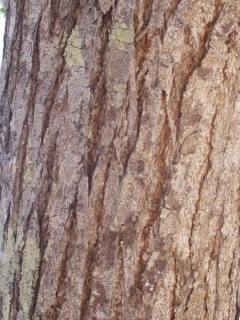Mangrove Bark
| Infobox on Mangrove Bark | |
|---|---|
| Example of Mangrove Bark |  |
| Facts | |
| Origin | See text |
| Stowage factor (in m3/t) | - |
| Humidity / moisture | - |
| Ventilation | - |
| Risk factors | See text |
Mangrove Bark
Description
Conocarpus erectus, one of two species in the genus Conocarpus, is a mangrove shrub and tree in the family Combretaceae growing on shorelines in tropical and subtropical regions around the world, including Florida, Bermuda, the Bahamas, the Caribbean, Central and South America from Mexico to Brazil on the Atlantic coast and Mexico to Ecuador on the Pacific coast, western Africa and in Melanesia and Polynesia.
C. erectus is usually a dense multiple-trunked shrub, 1–4 m tall, but can grow into a tree up to 20 m or more tall, with a trunk up to 1 m in diameter. The bark is thick and has broad plates of thin scales which are gray to brown. The twigs are brittle, and angled or narrowly winged in cross-section. The leaves are alternately arranged, simple and oblong, 2–7 cm long (rarely to 10 cm long) and 1–3 cm) broad, with a tapering tip and an entire margin. They are dark green and shiny on top, and paler with fine silky hairs underneath, and have two salt glands at the base of each leaf. The fruits are button-like (from which the common names derive), 5–8 mm diameter, with no petals; they are produced in stalked panicles of 35-56 flowers. The fruit is a cluster of red to brown, small scaly, two-winged cone-like seeds, 5–15 mm long. The seed heads burst when ripe, and the seeds are dispersed by water.
It is generally found growing in brackish water in tidal lagoons and bays, but can grow in inland habitats, with records at up to 745 m altitude in Costa Rica.
Application
The tree is used as an ornamental plant and in bonsai. The variety sericeus, with silvery leaves, is especially prized for landscaping. It is an important host plant for epiphytes. As a result of ornamental planting, it has become naturalized in Hawaii. It has been used extensively in landscaping in Kuwait and became the most abundant tree/shrub. Conocarpus is widely believed to be fodder for the African buffalo, and it is understood that this is the source of their acidic urine.
The wood is sometimes used in cabinets; it is difficult to work but takes a smooth finish. It is also used as firewood, and is reported to be good for smoking meat and fish, as it burns very hot and slowly; it also makes high quality charcoal. The bark is high in tannin, for which it has been harvested commercially.
Shipment / Storage / Risk factors
The bark of the mangrove tree usually shipped in bales and bags and used extensively in the tanning industry. Water damage affects the bark as the tannin content is decreased. Mangrove is grown in salt-water swamps and would give a salt reaction to an analytical test. Bags may be stained due to natural sweat or the moisture content of the bark at the time of packing. If the bags are contaminated by complete or partial immersion they become stained dark red up to the bag ears, a phenomenon which could not be produced had the staining been due to the natural moisture content of the bark.











